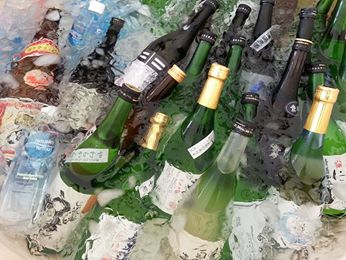Like this post? Help us by sharing it!
Richard Pearce is one of InsideJapan Tour’s knowledgeable tour leaders. When Richard is not taking people around Japan, he hides away in the mountains of deepest darkest rural Japan with his fingers in many cultural pies….
Living in rural Japan has many, many benefits, as I’ve touched on in previous posts. Clean air, cheaper housing, low-level celebrity status etc etc. However, parties, events and socializing opportunities in general are of course somewhat limited. I’ve found the best way to deal with this issue is to simply make the events yourself!
Want to go to a craft beer festival? Create a beer festival! Want to play football? Start a team!
The Daisenji beer festival is now in its third year and attracted 3500-4000 people in June. The football team, “Tottori Tigers”, were crowned West Japan Champions (all teams a mix of Japanese and non-Japanese) in 2013. In this spirit, whilst talking about the famous and huge Saijo Sake Festival near Hiroshima, the “Kurayoshi Sake Festival” was born.
The perceived benefits were four fold: to support local brewers, to network, to learn more about sake and, well, an excuse for a party! A great two days were had and 37 different types of sake consumed and, in the most part, enjoyed!
Generally speaking, premium sake can be put into two categories with three grades of quality. The two categories are those with no added alcohol (alcohol occurs naturally in the brewing process) and those with some added alcohol (known as “brewers alcohol”). Premium sake makes up about 20 percent of all sake made. The other 80 percent, “normal” sake if you like, is known in Japanese as “Futsuu” and is cheaper than the premium ones. Lots of distilled alcohol is added to futsuu to increase yields. Although cheaper and generally speaking of a lower quality, there are many delicious futsuu sakes on the market. The types and grades of premium sake are listed below.
No Added Alcohol Type
Junmai Daiginjo-shu
Brewed with very highly polished rice (at least 50%) with labour intensive and precise methods. Considered to be “the pinnacle of the brewers’ art”. Generally light, complex and fragrant.
Junmai Ginjo-shu
Brewed using more traditional, labour intensive methods rather than machinery with highly polished rice (at least 60%). The fermentation period is relatively long and done at colder temperatures. Light and fruity.
Junmai-shu
Made using rice that is polished to at least 70%. Made with only rice, water and koji mold (Koji mold is a very special part of the sake brewing process, converting sake rice into sugar that can be fermented). Often crisp and full taste.
Daiginjo-shu
Brewed with very highly polished rice (at least 50%) with labour intensive and precise methods. Considered to be “the pinnacle of the brewers’ art”. Generally light, complex and quite fragrant.
Ginjo-shu
Brewed using more traditional, labour intensive methods rather than machinery with highly polished rice (at least 60%). The fermentation period is relatively long and done at colder temperatures. Light, aromatic, fruity and refined.
Honjozo-shu
Made with rice, water, koji and a very small amount of pure distilled alcohol, which helps to extract flavour and aroma. Light, mildly fragrant and easy to drink.
There are all sorts of sake or ‘Nihon shu’ and something for all palates. When in Japan, give it a go. Kanpai!!!





